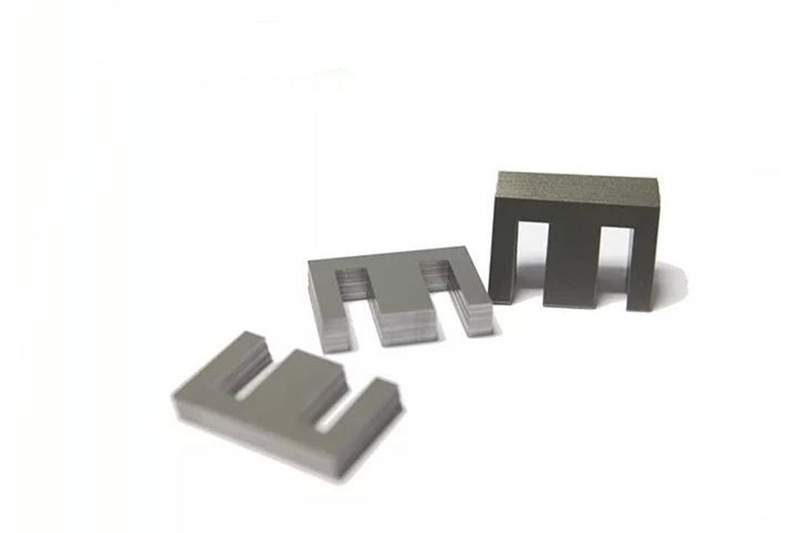Excellent magnetic performance
Efficient magnetic flux conduction: The structural design of the EI type core is conducive to the efficient conduction of magnetic flux. The combination of its “E” and “I” shapes constructs a relatively ideal magnetic circuit, which can guide the magnetic flux to pass through in a concentrated and stable manner and reduce magnetic flux leakage. Taking the power transformer as an example, this structure can concentrate most of the magnetic flux inside the core, reduce leakage loss, and improve the overall efficiency of the transformer, generally increasing the energy conversion efficiency to more than 95%.
Good magnetic permeability characteristics: EI type cores often use materials with high magnetic permeability such as silicon steel. In power frequency transformers, EI cores made of silicon steel sheets can generate higher magnetic flux density at lower excitation currents. For example, the common oriented silicon steel sheet has a magnetic permeability of thousands, which can effectively reduce the no-load current of the transformer, reduce energy consumption, and improve the operating economy of the transformer compared to other materials.
Stable hysteresis performance: Under the action of the alternating magnetic field, the EI type core exhibits good hysteresis performance. In particular, the silicon steel sheet core that has been properly heat treated has a narrow hysteresis loop and low hysteresis loss. During the long-term operation of the power transformer, the stable hysteresis performance can ensure that the core consumes less energy during the periodic magnetization process, further improving the energy efficiency of the transformer.
Significant cost-effectiveness
Material cost advantage: The silicon steel material commonly used in EI cores is widely available and relatively cheap. Compared with some special alloy materials, silicon steel has a significantly lower cost while meeting the basic magnetic performance requirements of transformers. The price of silicon steel sheets produced on a large scale is relatively stable, which makes transformers using EI cores have obvious cost advantages in raw material procurement, especially suitable for cost-sensitive power distribution and general industrial applications.
Mature manufacturing process and low cost: The manufacturing process of EI cores, such as stamping and stacking, is very mature. The stamping process can achieve mass production through molds, with high production efficiency and guaranteed precision, and can effectively control the manufacturing cost of a single product. At the same time, the stacking process is relatively simple, does not require complex equipment and processes, and further reduces the overall production cost. Compared with the manufacturing of some complex structure cores, the cost advantage of EI cores in the manufacturing process is very prominent.
Wide adaptability and flexibility
Diverse size adaptability: EI cores can flexibly adjust their sizes according to the capacity and design requirements of different transformers. From micro EI cores used in small electronic devices, such as mobile phone chargers and small audio device power supplies, to giant cores used in large power transformers, their sizes are rich and varied. This flexibility enables EI cores to meet the needs of transformers of various power levels, whether low-power electronic devices or high-power power transmission equipment.
Shape can be fine-tuned to meet special needs: Although the basic shape of EI cores is fixed, its shape can be fine-tuned in actual applications. For example, by adjusting the size and proportion of the core window, it can better adapt to the winding requirements of different windings and meet the layout requirements of other components inside the transformer. In some application scenarios with strict space restrictions, such as transformers in avionics, by fine-tuning the shape of EI cores, a compact structural design can be achieved to ensure that the transformer works normally in a limited space.

